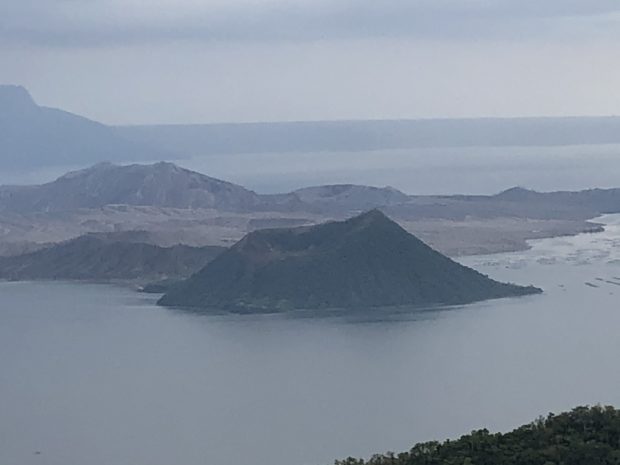MANILA, Philippines — Typhoon Pepito (international name: Man-yi) is expected to strengthen into a super typhoon before hitting land and may trigger lahar flows from Taal, Pinatubo, and Mayon volcanoes, according to the Philippine Institute of Volcanology and Seismology (Phivolcs).
In a Friday night advisory, Phivolcs warned that the typhoon’s path, strong intensity, and heavy rainfall could cause volcanic sediment flows, muddy streams, or runoff in rivers and drainage areas around these active volcanoes.
The Philippine Atmospheric, Geophysical and Astronomical Services Administration (Pagasa) said in its 5 a.m. cyclone bulletin that Pepito was last spotted 220 kilometers (km) east-northeast of Borongan City, Eastern Samar or 305 km east of Catarman, Northern Samar, packing maximum sustained winds of 175 kilometers per hour (kph) near the center and gustiness of up to 215 kph.
The tropical cyclone was moving west-northwestward at 25 kph.
Pagasa said Pepito is expected to become a super typhoon by Saturday, November 16.
Pepito is likewise anticipated to dump 50 millimeter (mm) to more than 200 mm of rainfall over most parts of Luzon where these three active volcanoes are located.
According to Phivolcs, post-eruption lahars from the Mayon Volcano may come from remnant pyroclastic density current (PDC) deposits from the January-March 2018 blast.
It added that potential lahars and sediment-laden streamflows may occur along the Miisi, Binaan, Anoling, Quirangay, Maninila, Masarawag, Muladbucad, Nasisi, Mabinit, Matanag, Basud, and Bulawan Channels in Albay Province.
Phivolcs also said that “prolonged and heavy rainfall may generate non-eruption lahars on major rivers draining western Pinatubo Volcano where significant deposits of the 1991 PDCs remain on the watershed.”
“Pinatubo lahars are likely be channel-confined and occur on the upper to middle reaches of the Sto. Tomas- Marella and Bucao River systems but may transition to muddy streamflows and floods on the lower reaches and affect adjacent communities of San Marcelino, San Narciso, San Felipe and Botolan, Zambales Province.”
READ: Bicol, still reeling from Kristine, is on path of Pepito
“Muddy streamflows may likewise be generated along the O’Donnell and Pasig-Potrero River systems draining the Pinatubo edifice to the north and southeast, respectively and affect downstream communities in Tarlac and Pampanga Provinces.” Phivolcs explained.
The state volcanologist further said “muddy streamflow, muddy runoff, and even volcanic debris flows around Taal Volcano, particularly on the slopes west and north of Taal Lake,” may arise due to extended and massive rainfall.
Phivolcs said the “old and loose volcanic deposits, already saturated from previous rains, may be remobilized in streams, roads and across the lakeward slopes.”
It said previously affected communities of Agoncillo, Laurel, and Talisay in Batangas province may be affected if muddy and debris flows from Taal recurs.
Phivolcs advised at-risk communities and local government units around the Taal, Pinatubo, and Mayon volcanoes to continuously monitor Pepito and take pre-emptive measures to ensure their safety.
